This post is also available in: Italian
As the very cradle of our civilization, Lazio is a vast territory with heterogeneous physical characteristics, and a prevalence of mountainous and hilly areas, lakes and, near the Tyrrhenian coast, valleys and large fertile plains. Lazio is also rich in historic villas and famous gardens, parks, reserves and other protected natural areas. There are gorges, forests and the large plateaus of Tuscia but also the romantic lakes of Vico, Nemi and Bolsena. Not to mention the green hills of the Sabina territory, the rugged Maremma, what remains of the coastal strip, the historic villages, and the acropolis of ancient populations.
It goes without saying that there are also many wonderful nurseries in this area: we’ve thus divided them into two suggested itineraries. The first (Discovering nurseries, Lazio / 1 ), starts near Lake Bolsena and reaches Tivoli, passing through Viterbo and Rieti; the second, (Discovering nurseries: from Rome to Latina – Lazio / 2) starts in the outskirts of Rome and runs all the way to Latina.
The first itinerary (featuring wondrous aromatic plants, magnolias, hydrangeas, black pomegranates, rare geraniums, autumn blooms, peonies, and spectacular Japanese maple trees) may be linked to Discovering nurseries in Umbria. To do so, you should start from Le Rose Nursery, 21 miles away, or follow Discovering nurseries: from Rome to Latina (Lazio/2).
The Nurseries
The map shows the nurseries and other locations included in our suggested itinerary. Distances are also mentioned, in order to make it easier and more practical for you to make your choice and save petrol and time.

Le Aromatiche di Bolsena – in San Lorenzo Nuovo (VT): Located on the bank of Lake Bolsena, not far from Umbria and Toscana Regions, this nursery has been focusing on vegetable plants and flowers for more than 20 years. It has recently introduced wild herbs, aromatic, and medicinal plants and it now features more than 280 varieties.
Distances to other nurseries: 4 miles to Vivaio Giardino Tara – 26 miles to Centro Botanico Moutan – 54 miles to Alessandra Orsi Farm– 67 miles to Gli Aceri della Sabina – 76 miles to Il Fiore all’Occhiello.
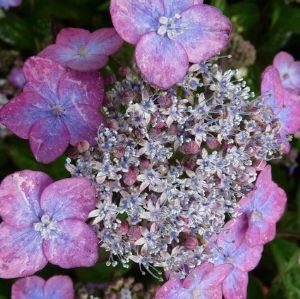
Vivaio Giardino Tara, in Bolsena (VT): this facility offers hydrangeas and all other plants, roses, magnolias, wisteria, Itoh peonies, magnolias (formerly Michelia), Punica granatum and rare plants for collectors. It was born from a small farm located on the shores of Lake Bolsena. The production is mainly focused on pot hydrangeas and rare species for collectors, divided and grown according to their features.
The hydrangea collection includes Hydrangea arborescens, Hydrangea aspera, Hydrangea heteromalla, Hydrangea involucrata, Hydrangea macrophylla, Hydrangea paniculata, Hydrangea quercifolia, Hydrangea serrata, and other species.
Distances to other nurseries: 21 miles to Centro Botanic Moutan – 4 miles to Le Aromatiche di Bolsena – 52 miles to Alessandra Orsi Farm– 107 miles to Gli Aceri della Sabina – 104 miles to da Il Fiore all’Occhiello.
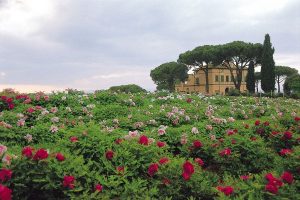
Centro Botanico Moutan, in Vitorchiano (VT): this facility features a huge collection of peony trees and Chinese herbaceous plants (more than 200.000 specimens). It was established by Mr Confalonieri, a passionate engineer. Booked visits to the Peony Garden are available in April and May.
Distances to other nurseries: 31 miles to Alessandra Orsi Farm – 26 miles to Le Aromatiche di Bolsena – 21 miles to Vivaio Giardino Tara – 48 miles to Gli Aceri della Sabina – 56,5 miles to Il Fiore all’Occhiello.

Alessandra Orsi Farm , in Tarano (RI): this nursery is specialized in annual plants, perennial herbs, creepers, potted spicy peppers, pumpkins – also for ornamental use – “forgotten” vegetables and other unusual produce obtained through organic farming. It also features a beautiful cottage-like garden.
Distances to other nurseries: 28 miles to Gli Aceri della Sabina – 54 miles to Le Aromatiche di Bolsena – 52 miles to Vivaio Giardino Tara – 31 miles to Centro Botanico Moutan – 37 miles to Il Fiore all’Occhiello.
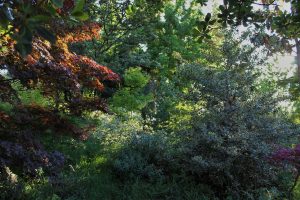
Gli Aceri della Sabina, a Borgo Quinzio (RI): These trees, planted by nurseryman Alessandro Biagioli, are one of the biggest collections of Japanese maples in Italy. Currently, it features 150 specimens, but it keeps on growing and expanding itself with new and even rare trees.
Distances to other nurseries: 28 miles to Il Fiore all’Occhiello – 71,5 miles to Le Aromatiche di Bolsena – 67 miles Vivaio Giardino Tara – 48 miles to Centro Botanico Moutan – 28 miles to Alessandra Orsi Farm

Il Fiore all’Occhiello, in Palombara Sabina (RI): the name of this nursery, created in 1999, and initially known as Fra.Mar., means “Boutonniere flower” – a floral decoration worn on the lapel of a tuxedo or suit jacket. It used to feature 300 varieties of Pelargonium flowers. Nowadays it mainly focuses on botanic species, fragrant, and ancient varieties originally grown in the 1700s and 1800s.
Distances to other nurseries: 80 miles to Le Aromatiche di Bolsena – 76 miles to Vivaio Giardino Tara – 56,5 miles to Centro Botanico Moutan – 35 miles to Alessandra Orsi Farm– 37 miles to Gli Aceri della Sabina.
From there, you can proceed on our second recommended itinerary:
Discovering Nurseries: from Rome to Latina (Lazio/2), reaching Le Figlie del Vento Nursery, about 28 miles away.
Gardens and reserves along the way
Due to the large number of gardens and reserves in this part of Italy, you should visit: Italian Botanical Heritage, regione Lazio, (orti e giardini botanici, parchi naturali…) for more, comprehensive information. Here’s a small selection that also includes a very interesting islet on Lake Bolsena.
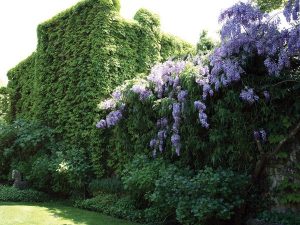
Il Giardino della Cannara, a Marta (VT): A Cannara is an ancient house, dating back to the Roman period, which has always been intended as a fishing hut for eels. As a matter of fact, the River Marta flows underneath this structure, originating from Lake Bolsena, and eventually reaching the Mediterranean, near Tarquinia (VT). This Cannara is like a bridge-house with eel-catching grids, formerly made with reeds (hence the word Cannaia or Cannara).
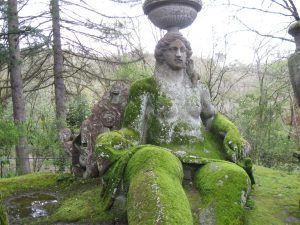
Sacro Bosco di Bomarzo (VT): This sacred wood, also known as “Parco dei Mostri” (Park of the monsters”), is a monumental area on the slopes of a natural amphitheatre, in the province of Viterbo. It was designed in 1552, at the behest of Prince Pier Francesco Orsini who tasked architect Pirro Ligorio with the creation of a labyrinth of symbols in the estate of Bomarzo.
He wanted to get himself lost wandering among gigantic statues carved in stones, representing monstrous creatures. The Italian gardens in the wood are built with a geometric and prospective basis, with ornaments like large terraces, fountains, and mannerist sculptures.
In the thicket there are figures of monsters, dragons, mythological subjects, and exotic animals protruding from the ground; there’s also a leaning house, a funeral temple, fountains, seats, and obelisks engraved with various mottos and inscriptions.
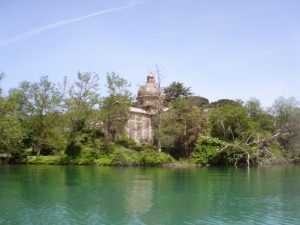
Isola Bisentina, Lago di Bolsena (VT): Lake Bolsena, in the province of Viterbo, is of volcanic origin – hence its oval shape. It’s fed by an emissary river and has two islands, Bisentina, and the smaller Martana. The former covers an area of 42 acres. it preserves traces of ancient Etruscan and Roman dwellers, with more recent monuments, such as the church of Santi Giacomo and Cristoforo del Vignola, with its majestic dome, the Franciscan convent, the Rocchina, the small temple of Santa Caterina – built on an Etruscan columbarium rising from a spur of rock overlooking the lake, and the chapel of the Crucifix – with frescoes from the 15th century. There is also the “Popes’ Malta Island”, which used to serve for life imprisonment of clerics guilty of heresy. The winding outline of the island has western inlets, Mount Tabor to the north, and eastern rocky cliffs overlooking the lake, with a lush south side. It is home to almost uncontaminated nature, featuring thick holm oak woods (Quercus ilex), Italian gardens, and enchanting sights.
Local gastronomic treats
While you’re here, you should absolutely try Red garlic from Proceno, Solfarino beans , Maremma fennels, Scatolone tomato from Bolsena, and Valentano chickpeas (produced around the city of Viterbo).
This post is also available in: Italian


Leave a Reply